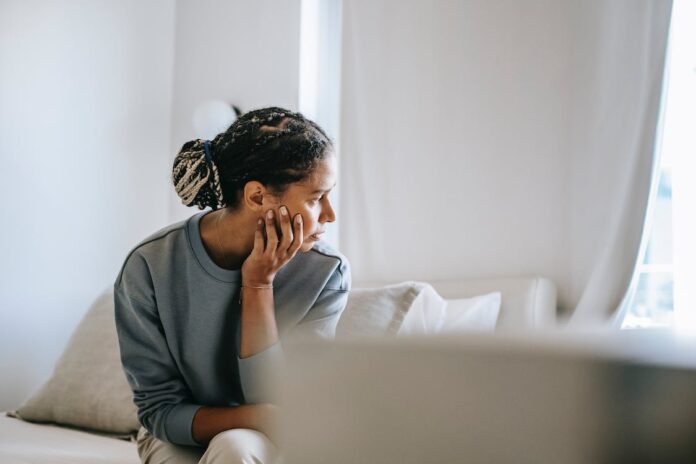
By Stacy M. Brown, NNPA Newswire Senior National Correspondent
A new Gallup study released on May 17 shows that the lifetime depression rates of Black and Hispanic adults are rising quickly and have now passed those of white adults.
Gallup found that white people have always had slightly higher rates of both lifetime and current depression, but African Americans and Hispanics now suffer the most.
Overall, 29% of U.S. adults acknowledge a depression diagnosis at some point, almost ten percentage points more than in 2015.
Gallup’s National Health and Well-Being Index says that the number of Americans who have depression or are currently receiving treatment has increased by about seven points in the same period to 17.8%.
Both rates are the highest that Gallup has seen since it started tracking depression with the current method in 2015.
The Gallup Panel surveyed 5,167 U.S. adults from Feb. 21 to Feb. 28 to get the most current results.
The panel comprises about 100,000 adults from all 50 states and the District of Columbia.
Questions included, “Has a doctor or nurse ever told you that you have depression,” and “Do you currently have depression, or are you being treated for it?”
Over one-third of women (36.7%), compared to 20.4% of men, say they have been diagnosed with depression at some point.
Since 2017, the rate of depression in women has risen almost twice as fast as in men.
Individuals 18 to 29 (34.3%) and between 30 and 44 (34.9%) are diagnosed with depression at much higher rates than people over 44.
The highest rates of current depression or treatment for depression are also among women (23.8%) and people ages 18 to 29 (24.6%).
Compared to 2017 projections, these two groups have the fastest-rising rates (up 6.2% and 11.6%, respectively).
Adults aged 30–44 also have the fastest-rising rates.
Depression is not just a problem in the U.S.
Around the world, 4 in 10 adults aged 15 or older have severe depression or anxiety or know someone who does.
According to other Gallup research, 22% of adults in Northern America have had depression or anxiety so badly that they couldn’t do their normal daily activities for two weeks or longer.
Gallup researchers said that’s about the same as the global rate of 19% and the same as the rates in Western Europe, the Middle East and North Africa, and South Asia.
Before the COVID-19 pandemic, the U.S. clinical sadness rate grew slowly.
After the pandemic, however, it went up by a significant amount.
Researchers said social isolation, loneliness, fear of infection, mental exhaustion (especially among first responders like health care workers), increased drug use, and problems with mental health services may have played a role.
Even though the number of people who feel very lonely every day has decreased in the past two years due to widespread vaccinations and a slow return to normalcy, increased loneliness during the pandemic was likely a significant factor in the rise of long-term depression.
Currently, 17% of adults in the U.S. say they were very lonely “yesterday,” which adds up to an estimated 44 million people.
Women have always reported much higher amounts of depression than men have in subgroups, researchers said.
This gap has gotten a lot bigger since 2017, likely due to several COVID-related factors, such as women being more likely to lose their jobs or stop working altogether, partly because the pandemic kept kids from going to school or daycare.
In 2019, 78% of all healthcare workers were women, putting them at a higher risk for emotional and mental problems because of the pandemic.
Conversely, young people are more likely to be single and to say they are lonely, especially during the pandemic.
Experts said young people also need more time with others to boost their happiness than older adults do.
COVID-19 has a direct effect on this.
Those under 30 and individuals with lower incomes are more likely to feel sad, worried, or angry every day, which are all symptoms of depression, the researchers found.
Women, young adults, and people of color were also more likely to lose their jobs entirely because of the pandemic.

